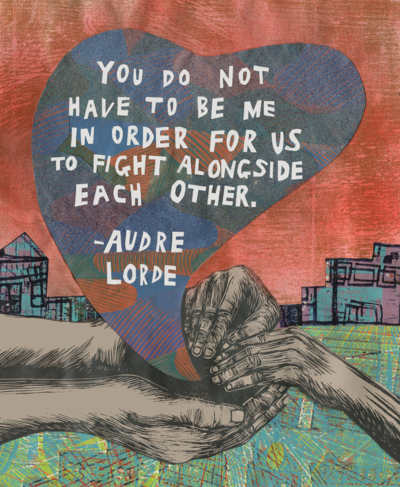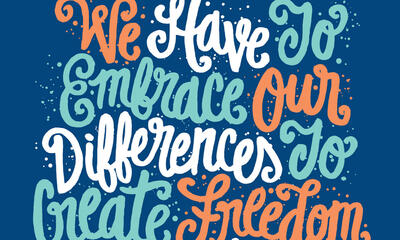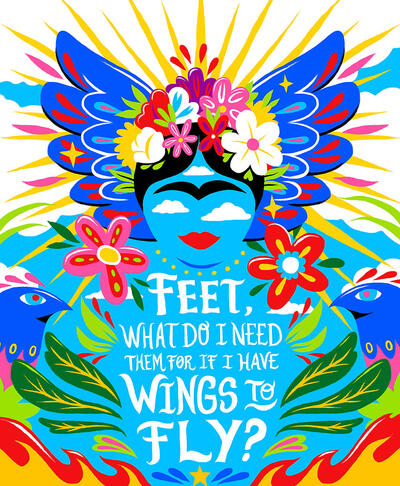The struggle for equality and justice for all women is not relegated to history; it is the lived experience of women today in the United States and around the world.
Amid political attacks and efforts to control bodily autonomy, women’s history must be viewed through the lens of women’s rights now.
Make a commitment to discuss, teach and learn about women’s rights and history, past and present, during Women’s History Month and every day. Legislation and policies that deepen injustice—whether they limit teaching about race and racism, allow children and families to struggle in poverty, attempt to erase LGBTQ+ people and curtail their freedom to access care, limit reproductive rights, deny the need for environmental justice, limit disability inclusion, or restrict voting rights—are all challenges for women today. And injustice disproportionately affects women in communities that have been marginalized and heavily controlled, such as those of Black, Indigenous and other people of color; LGBTQ+ individuals; and poor people.
Learning for Justice has curated resources to help discuss and uplift both the history of and the ongoing struggle for women’s equality, with stories of unsung heroes and from an intersectional lens. We hope you’ll use and share these resources, not only during Women’s History Month but all year long.
Resources
Articles

The Women’s March: Protest and Resistance
The 2017 Women’s March made a powerful statement for women’s rights and resistance to divisive rhetoric. The movement’s greater impact is its energizing of activists, especially young women, in the United States and around the world.
A Supremely Historic Moment
With Ketanji Brown Jackson as the first Black woman appointed to the U.S. Supreme Court, we can all learn important lessons about intersectionality, representation and our essential role in eliminating obstacles for young people.
Insist on Persistent Women: Women’s History in the K-8 Classroom
Young people need stories of persistent women who have fought for gender equality. Women's History Month is a good time for us to recommit to teaching those stories.
A More Complete Women’s History
Go beyond “famous firsts” and teach about the many ways women show up in the world.
Teach About Native American Women Leaders
Build students’ media literacy by helping them contextualize stories about women candidates—and particularly Native women candidates—during election season and beyond.

Nothing About Us Without Us Is for Us
Youth activist Hazel Edwards recounts her journey from being pushed out of school to teaching her district how to serve transgender students.
Roe v. Wade—What Can Educators Do?
While we may feel overwhelmed in the aftermath of the overturned landmark decision, we are neither hopeless nor helpless. A social justice education expert offers suggestions.
Partnering With Families To Support Black Girls
Educators can take specific actions to make schools more supportive spaces for Black girls, whose trauma is often overlooked.
Texts

Jerrie Mock (Elementary)
Tamera Bryant relays the story of Jerrie Mock and her dream to fly an airplane around the world. In spite of naysayers, including her family, who tried to remind her that girls grow up to be wives and mothers, Jerrie followed her dream and became the first woman to fly an airplane around the world.
Susan B. Anthony (Elementary)
In this short biography for younger readers, Alexandra Wallner follows Susan B. Anthony from her birth to her death, detailing her life, goals, hardships and accomplishments.
You Forgot Your Skirt, Amelia Bloomer! (Elementary)
Amelia Bloomer was a woman who liked to think, live and even dress unconventionally, and she encouraged other people—particularly women—to do the same.
Raised by Women (Middle School)
In her poem, Kelly Norman Ellis brings to life a vivid picture of the kind of women she was surrounded and brought up by during her childhood in Mississippi. The poem’s speaker takes you down South and makes you feel like a guest at the kitchen table by way of her descriptions.
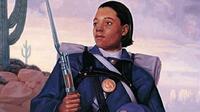
Hidden Figures of Women’s History: Cathay Williams (Middle School)
Nearly 80 years before women officially were allowed to serve in the U.S. Army, former slave Cathay Williams did so, patrolling the western United States as a member of the all-Black Buffalo Soldiers.
Going to Bat for Girls (Title IX) (Middle School)
School athletics in Nebraska are radically altered after a mother’s court fight for equal treatment for high school female athletes.
Witch Hunting (Middle School)
In this essay, the author draws parallels between the “witch hunts” experienced in 1692 in Salem, Massachusetts, and in 1950 in the U.S. government at Sen. Joseph McCarthy’s urgings.
Welfare Is a Women’s Issue (Middle and High School)
This essay expounds on the injustices and false perceptions faced by women in the welfare system. Johnnie Tillmon contends that the system is overrun with sexism and that until American women are liberated by equal pay, the welfare system will continue to be a trap for them.
The Combahee River Collective Statement (1977) (Middle and High School)
The Combahee River Collective (CRC) was a radical Black feminist organization formed in 1974. In the CRC statement, members outlined their key ideology, which was that structures of oppression were “interlocking” or happening simultaneously, thus creating new measures of inequality. This section of the CRC’s statement, “What We Believe,” details the political ideology of the organization.
StoryCorps: Job Interview (Middle School)
In this conversation, Tia Smallwood talks with her daughter Christine Smallwood about the challenges she faced as a young woman entering the job market.
A Room of One’s Own (High School)
In this excerpt, Virginia Woolf declares that any talented woman born in the 16th, 17th, 18th or even 19th centuries would have been hindered from sharing her gifts due to her gender, and if she somehow overcame this obstacle, her name would not have been tied to her work.
The Yellow Wallpaper (High School)
This short story—an important piece in early American feminist literature—sheds light on 19th century attitudes toward women with physical and mental illness. In this excerpt, the speaker details her bedroom, a place where her husband and doctors come to encourage her to health. Her ailment is vague; the emphasis is on what others—all men—think and say.
1920: Women Get the Vote (High School)
This article examines the history of the 19th Amendment, which secured the right to vote for women. It examines women’s participation at the polls since then and considers the possibility and impact of greater numbers of women in public office.
Viola Liuzzo (High School)
This essay highlights Viola Liuzzo’s involvement in the Civil Rights Movement and her tragic murder while shuttling marchers between Montgomery and Selma, Alabama.
Bella Abzug (High School)
This article tells the story of Bella Abzug, a prominent liberal activist and politician in the 1960s and 1970s who championed women’s rights, human rights and the environment.
Graça Machel (High School)
This story highlights Graça Machel, who dedicated her life to fighting for the rights of children—especially those who have fallen victim to war—all over the world.
Wangari Maathai (High School)
In Kenya, Wangari Maathai has initiated a successful program to counteract the alarming destruction of Africa’s forests.
Rigoberta Menchú (High School)
This text offers a brief biography of Rigoberta Menchú, who has dedicated her life to fighting the injustices faced by the people of Guatemala and educating the world on the concept of Indigenous people and fighting for their interests.
Lessons
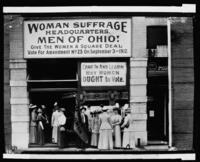
Women’s Suffrage
This lesson delves into primary and secondary sources to explore the history of the women’s suffrage movement that culminated in the passage and ratification of the 19th Amendment.
Beyond Rosa Parks
Most history textbooks include a section about Rosa Parks in the chapter on the modern Civil Rights Movement. However, Parks is only one among many African American women who have worked for equal rights and social justice. This series introduces four of those activists who may be unfamiliar to students.

